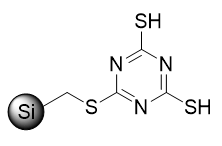Jan 20, 2023 12:54:30 PM
Metal Scavengers: An alternative to recrystallization for removing metals?
By Biotage

In this blog, I will address something that is fundamental to years of classic process chemistry techniques. First disclaimer is that the pharma industry uses recrystallization for several purposes, nearly always for the creation of purer product and sometimes in connection with isolation of specific crystalline forms.
That is a huge topic, one that people devote their lives to and one that there are volumes of published knowledge on as some specific crystalline forms of potential drug molecules may be more bioactive from a physiochemical perspective.
This blog is not about that. What I will address here is a question that is often posed after one of my seminars, and a study that led from it, from a chemistry perspective.
Can metal scavenging help to reduce metals content of APIs in cases where recrystallization may be considered? What are the advantages and disadvantages? And, since metal scavenging is all about saving time, being more efficient, and hitting hard to reach purity goals, I was absolutely interested to find out.
In this study, we compared a standard Suzuki reaction creating a product that was familiar to us and that we know had an affinity for palladium. It was therefore ‘sticky’ and would have tended to resist metal purging by normal means and would have a propensity to drag palladium through final products to isolation, Figure 1.

Figure 1. Suzuki reaction using a Pd catalyst.
We used ISOLUTE® Si-TMT (Figure 2) and compared its post reaction palladium removal efficiency with recrystallization methods.

Figure 2. ISOLUTE ® Si-TMT structure
After the Suzuki coupling reactions, the mother liquors (brown / black suspensions as usual) were quenched, worked up by simple filter, and extracted into ethyl acetate. At that point the organic layer was portioned, various techniques such as recrystallization and metal scavenging applied, with results compared by external analysis via ICP (Palladium).
We conducted a large-scale (250 g) experiment and produced familiar quantities with excellent purity of the expected biraryl-coupled product. Our base was sodium carbonate, solvent conditions were a DME/water/ethanol mix and the reaction was heated and allowed to proceed for 16 hours. Mother liquors were going to contain excess boronic acid, spent catalyst, inorganic salts, as well as product. Following extraction into ethyl acetate a familiar brown solution was obtained. This was split into two portions, one of which subjected to crystallization techniques and the other which was passed directly through a small plug of the metal scavenger, ISOLUTE® Si-TMT.
Palladium was measured in the extracted product (@1300 ppm), at the 1st recrystallized crop (@200 ppm) but in the product that eluted directly from the Si-TMT plug treatment, palladium was measured to be only 5ppm.

While it is true to say that recrystallization did reduce the palladium content of our ‘sticky’ API analogue, from 1300 to 200 ppm, it would likely have taken another 2-3 crops to reduce this further. With the reduction in mass yield that usually comes with that, we ultimately would have expected pure product, but less of it via recrystallization methods while also consuming a lot more time.
It is also possible for recrystallization to concentrate metals such as palladium and incorporate them within crystal structures, meaning for some products, it could be impossible to fully remove palladium via recrystallization (we didn’t test that, but were aware of the potential limitation).
Metal scavengers can provide a fast-convenient alternative solution to removing metals in these cases.
In the case of the treatment of crude product with ISOLUTE Si-TMT, we saw a significant reduction in palladium concentration, from 1300 ppm to 5 ppm in one treatment. This one was a plug / column of the Si-TMT and the process was a one-pass treatment complete in a matter of minutes, under gravity. In cases where the API may have tendencies to bind palladium, we saw that the bidentate ligand binding potential of Si-TMT, more than overcame any residual internal competition from the API thus removing palladium to almost below detectable limits using some mechanically very simple, robust, and reproducible processing techniques.
In our previous blog post our in-house expert discusses if metal scavengers are better than carbon. Follow the link to read it now:
Published: Jan 20, 2023 12:54:30 PM

